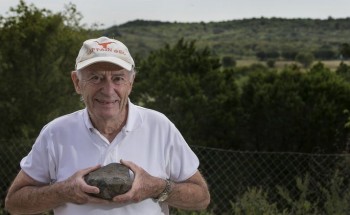It’s hard to imagine Austin 80 million years ago, when the volcano, now called Pilot Knob, was active. Back then, the climate was tropical, the area covered by a very shallow sea with an abundant sea life. There were all kinds of dinosaurs roaming around, so tall that they could walk from present-day Fort Worth to San Antonio without getting their heads under water. There were earthquakes from volcanic eruptions. But most imposing of all were the violent explosions.
“There was quite a lot of activity, just here in Central Texas,” says Leon Long, professor emeritus of geology at the University of Texas.
The Austin-American Statesman, Oct.30, 2015
Featuring: Leon Long, professor emeritus, Department of Geological Sciences, Jackson School of Geosciences

